-
 bitcoin
bitcoin $109523.663807 USD
-0.13% -
 ethereum
ethereum $4019.526508 USD
2.06% -
 tether
tether $1.000482 USD
0.00% -
 xrp
xrp $2.776815 USD
0.18% -
 bnb
bnb $958.942396 USD
0.12% -
 solana
solana $204.294698 USD
3.84% -
 usd-coin
usd-coin $0.999693 USD
0.00% -
 dogecoin
dogecoin $0.232115 USD
2.09% -
 tron
tron $0.338028 USD
0.84% -
 cardano
cardano $0.790920 USD
1.50% -
 hyperliquid
hyperliquid $44.871443 USD
5.60% -
 ethena-usde
ethena-usde $1.000322 USD
0.04% -
 chainlink
chainlink $21.034165 USD
2.60% -
 avalanche
avalanche $28.794831 USD
-0.54% -
 stellar
stellar $0.360466 USD
1.24%
How to analyze RSI and trading volume? Can it enhance the signal?
Combining RSI and trading volume can enhance trading signals in crypto markets, confirming trends and potential reversals for more informed decisions.
May 22, 2025 at 01:14 pm
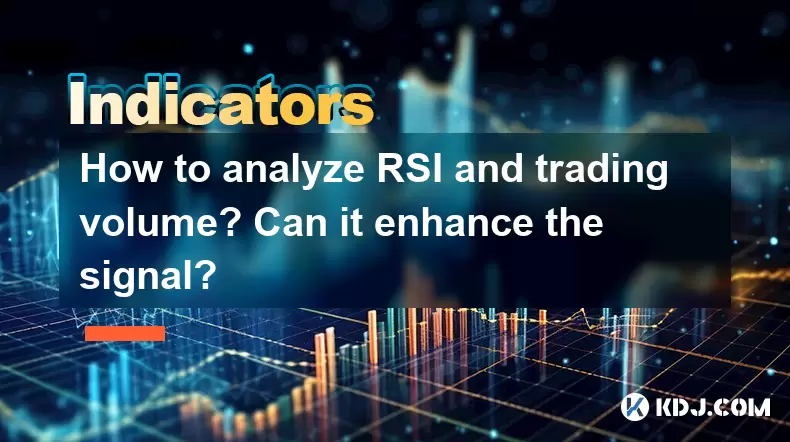
Understanding how to analyze the Relative Strength Index (RSI) and trading volume can significantly enhance your trading signals within the cryptocurrency market. RSI is a momentum oscillator that measures the speed and change of price movements, while trading volume indicates the total number of shares or contracts traded within a specified time frame. When combined, these two indicators can provide a more comprehensive view of market trends and potential reversal points. In this article, we will explore how to analyze these indicators and how their combined use can enhance trading signals.
Understanding RSI
The Relative Strength Index (RSI) is a popular technical indicator used to identify overbought or oversold conditions in the market. RSI values range from 0 to 100, with readings above 70 typically indicating overbought conditions and readings below 30 indicating oversold conditions. To calculate RSI, you need to follow these steps:
- Gather price data: Collect the closing prices of the cryptocurrency over a specified period, typically 14 days.
- Calculate the average gain and average loss: Compute the average of the positive price changes (gains) and the average of the negative price changes (losses) over the selected period.
- Compute the relative strength (RS): Divide the average gain by the average loss.
- Calculate the RSI: Use the formula RSI = 100 - (100 / (1 + RS)).
By plotting the RSI on a chart, traders can visually identify when a cryptocurrency might be due for a price correction.
Interpreting RSI
Interpreting RSI involves understanding the signals it provides. An RSI above 70 suggests that the asset may be overbought, and a price correction could be imminent. Conversely, an RSI below 30 indicates that the asset may be oversold, presenting a potential buying opportunity. However, RSI alone can sometimes produce false signals, especially in strong trending markets. Therefore, it's crucial to use RSI in conjunction with other indicators, such as trading volume.
Analyzing Trading Volume
Trading volume is another critical indicator that can provide insights into the strength of a price move. High trading volume often accompanies significant price movements, indicating strong interest from traders. Conversely, low trading volume may suggest a lack of conviction in the current price trend. To analyze trading volume effectively, follow these steps:
- Collect volume data: Obtain the trading volume data for the cryptocurrency over the same period used for RSI.
- Plot volume on the chart: Add a volume bar chart below the price chart to visualize the volume data.
- Analyze volume trends: Look for patterns such as volume spikes or sustained high volume periods that coincide with price movements.
By analyzing trading volume, traders can confirm the strength of a price trend and identify potential reversal points.
Combining RSI and Trading Volume
Combining RSI and trading volume can enhance the reliability of trading signals. When both indicators align, the likelihood of a successful trade increases. Here's how to use them together:
- Confirm overbought/oversold signals: When RSI indicates an overbought condition (above 70), look for a corresponding decrease in trading volume. This may suggest that the upward momentum is weakening, and a price correction is likely. Similarly, when RSI indicates an oversold condition (below 30), a subsequent increase in trading volume could confirm a potential price rebound.
- Identify divergences: Look for divergences between RSI and price action. For example, if the price is making higher highs but RSI is making lower highs, this could indicate a bearish divergence. Confirm this signal with a decrease in trading volume to increase the likelihood of a price reversal.
- Watch for volume spikes: Pay attention to significant volume spikes that coincide with RSI readings near the overbought or oversold thresholds. These spikes can confirm the strength of a potential trend reversal.
By integrating RSI and trading volume, traders can gain a more nuanced understanding of market dynamics and make more informed trading decisions.
Practical Example of RSI and Volume Analysis
To illustrate how RSI and trading volume can enhance trading signals, consider the following example:
- Scenario: A cryptocurrency has been in a bullish trend, with the price steadily increasing over the past few weeks.
- RSI analysis: The RSI value reaches 75, indicating an overbought condition.
- Volume analysis: The trading volume starts to decrease as the price continues to rise.
- Signal enhancement: The combination of an overbought RSI and decreasing volume suggests that the upward momentum is waning. This could be a signal to consider taking profits or preparing for a potential price correction.
In this example, the use of both RSI and trading volume provides a more robust signal than relying on RSI alone, enhancing the trader's ability to make timely and informed decisions.
Using RSI and Volume in Different Market Conditions
The effectiveness of RSI and trading volume can vary depending on market conditions. Here's how to apply these indicators in different scenarios:
- Trending markets: In strong trending markets, RSI may remain in overbought or oversold territory for extended periods. Use trading volume to confirm the strength of the trend. High volume during price movements in the direction of the trend can validate the trend's continuation.
- Range-bound markets: In markets that are trading within a defined range, RSI can be particularly useful for identifying potential reversal points. Look for overbought or oversold conditions near the range boundaries and confirm these signals with corresponding volume patterns.
- Volatile markets: In highly volatile markets, RSI and volume can help traders navigate rapid price swings. Monitor for sudden volume spikes and corresponding RSI movements to identify potential entry and exit points.
By adapting the use of RSI and trading volume to different market conditions, traders can improve their ability to capitalize on market opportunities and manage risk effectively.
Frequently Asked Questions
Q: Can RSI and trading volume be used for short-term trading strategies?A: Yes, RSI and trading volume can be effectively used for short-term trading strategies. For short-term trades, focus on shorter RSI periods (e.g., 7 days) and monitor volume closely for rapid changes that can signal short-term price movements. Combining these indicators can help identify quick entry and exit points in volatile markets.
Q: How can I avoid false signals when using RSI and trading volume?A: To avoid false signals, use RSI and trading volume in conjunction with other technical indicators, such as moving averages or Bollinger Bands. Additionally, consider the broader market context and use longer time frames to confirm signals. Waiting for confirmation from multiple indicators can reduce the likelihood of acting on false signals.
Q: Is it necessary to use a specific trading platform to analyze RSI and trading volume?A: No, it is not necessary to use a specific trading platform. Most reputable trading platforms and charting software offer tools to analyze RSI and trading volume. Popular platforms like TradingView, Binance, and Coinbase Pro provide these indicators as standard features, allowing traders to customize and analyze data according to their preferences.
Q: Can RSI and trading volume be used for all types of cryptocurrencies?A: Yes, RSI and trading volume can be applied to all types of cryptocurrencies, including major coins like Bitcoin and Ethereum, as well as altcoins and tokens. However, the effectiveness of these indicators may vary depending on the liquidity and volatility of the specific cryptocurrency. Always consider the unique characteristics of each asset when applying these indicators.
Disclaimer:info@kdj.com
The information provided is not trading advice. kdj.com does not assume any responsibility for any investments made based on the information provided in this article. Cryptocurrencies are highly volatile and it is highly recommended that you invest with caution after thorough research!
If you believe that the content used on this website infringes your copyright, please contact us immediately (info@kdj.com) and we will delete it promptly.
- BlockchainFX: The Crypto Presale Primed for a 2025 ROI Explosion
- 2025-09-27 18:25:19
- ETH Price Check: Smart Money Stays Cool Amidst ATH Rollercoaster
- 2025-09-27 18:25:19
- Aster Price, MrBeast, and DEX Volumes: What's the Buzz?
- 2025-09-27 18:45:11
- Shiba Inu, Meme Coins, and MAGACOIN FINANCE: What's Next?
- 2025-09-27 18:45:11
- Aster DEX: Navigating DeFi's Future with Price Predictions and Key Insights
- 2025-09-27 18:50:01
- Virtuals Protocol's New Genesis: A Deep Dive into the Launch and $VIRTUAL's Potential
- 2025-09-27 18:50:01
Related knowledge
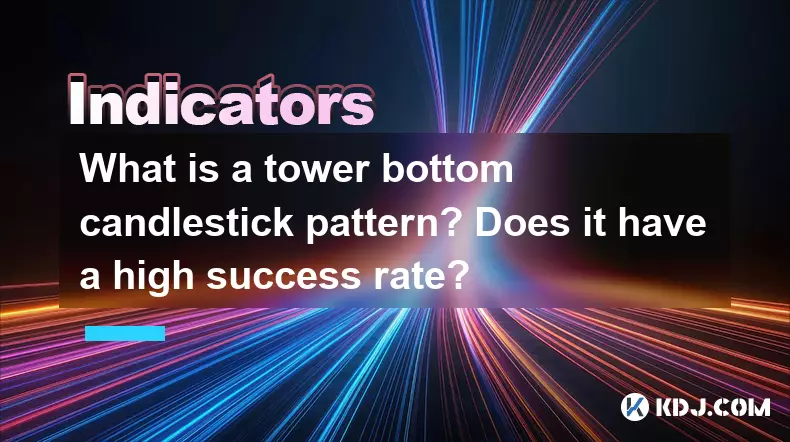
What is a tower bottom candlestick pattern? Does it have a high success rate?
Sep 22,2025 at 07:18am
Tower Bottom Candlestick Pattern Explained1. The tower bottom candlestick pattern is a reversal formation that typically appears at the end of a downt...
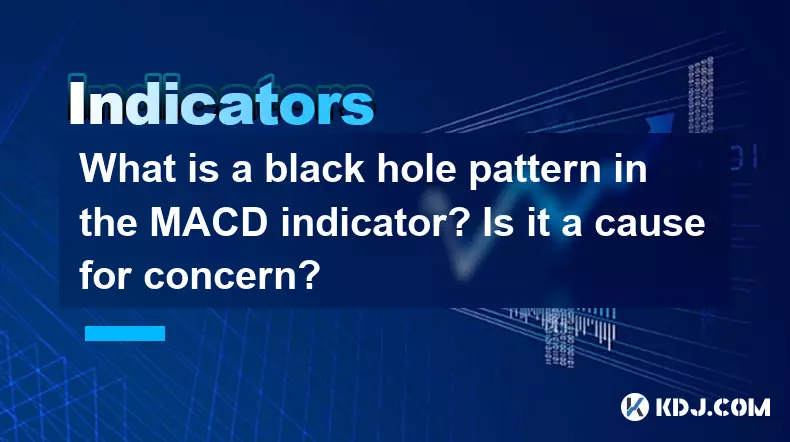
What is a black hole pattern in the MACD indicator? Is it a cause for concern?
Sep 21,2025 at 06:54pm
Bitcoin's Role in Decentralized Finance1. Bitcoin remains the cornerstone of decentralized finance, serving as a benchmark for value and security acro...

How can I use the psychological line (PSY) to determine market sentiment?
Sep 17,2025 at 02:19pm
Understanding the Psychological Line (PSY) in Cryptocurrency TradingThe Psychological Line, commonly referred to as PSY, is a momentum oscillator used...
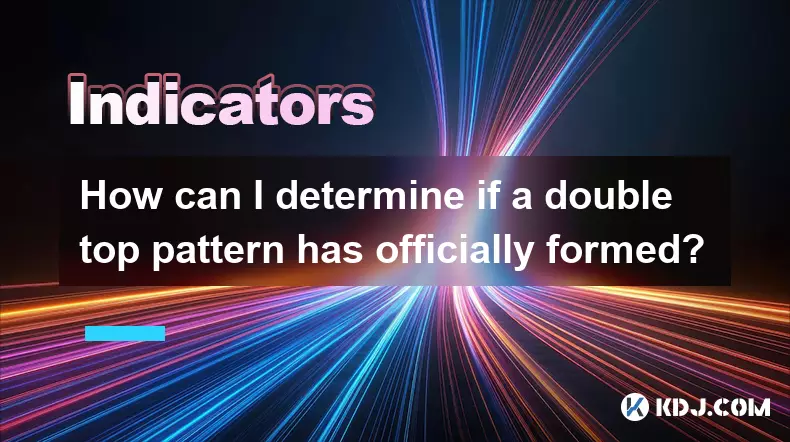
How can I determine if a double top pattern has officially formed?
Sep 21,2025 at 03:18am
Understanding the Structure of a Double Top Pattern1. A double top pattern consists of two distinct peaks that reach approximately the same price leve...
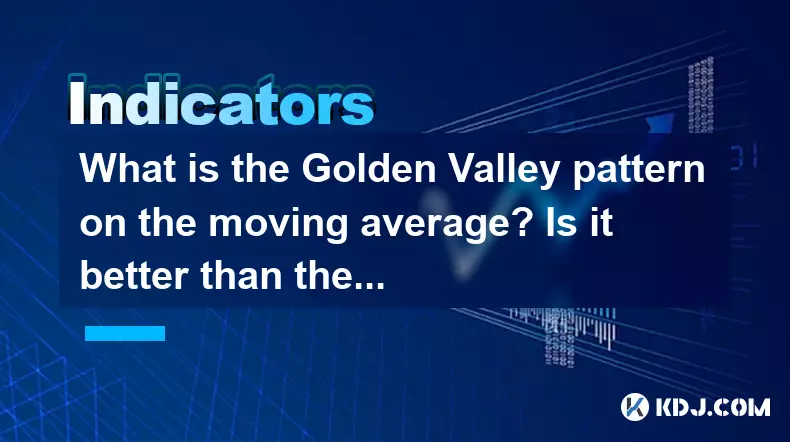
What is the Golden Valley pattern on the moving average? Is it better than the Silver Valley pattern?
Sep 21,2025 at 02:54pm
Understanding the Golden Valley Pattern in Moving Averages1. The Golden Valley pattern is a technical formation observed in cryptocurrency price chart...

What does a death cross of the RSI in the strong zone (above 50) mean?
Sep 17,2025 at 10:54pm
Understanding the Death Cross in RSI Context1. The term 'death cross' is traditionally associated with moving averages, where a short-term average cro...

What is a tower bottom candlestick pattern? Does it have a high success rate?
Sep 22,2025 at 07:18am
Tower Bottom Candlestick Pattern Explained1. The tower bottom candlestick pattern is a reversal formation that typically appears at the end of a downt...

What is a black hole pattern in the MACD indicator? Is it a cause for concern?
Sep 21,2025 at 06:54pm
Bitcoin's Role in Decentralized Finance1. Bitcoin remains the cornerstone of decentralized finance, serving as a benchmark for value and security acro...

How can I use the psychological line (PSY) to determine market sentiment?
Sep 17,2025 at 02:19pm
Understanding the Psychological Line (PSY) in Cryptocurrency TradingThe Psychological Line, commonly referred to as PSY, is a momentum oscillator used...

How can I determine if a double top pattern has officially formed?
Sep 21,2025 at 03:18am
Understanding the Structure of a Double Top Pattern1. A double top pattern consists of two distinct peaks that reach approximately the same price leve...

What is the Golden Valley pattern on the moving average? Is it better than the Silver Valley pattern?
Sep 21,2025 at 02:54pm
Understanding the Golden Valley Pattern in Moving Averages1. The Golden Valley pattern is a technical formation observed in cryptocurrency price chart...

What does a death cross of the RSI in the strong zone (above 50) mean?
Sep 17,2025 at 10:54pm
Understanding the Death Cross in RSI Context1. The term 'death cross' is traditionally associated with moving averages, where a short-term average cro...
See all articles









































































